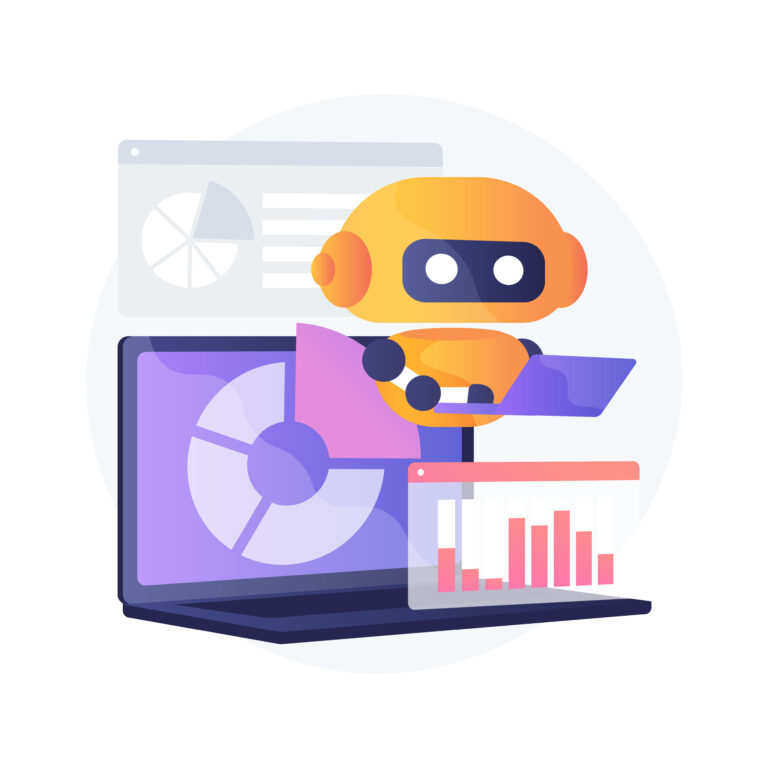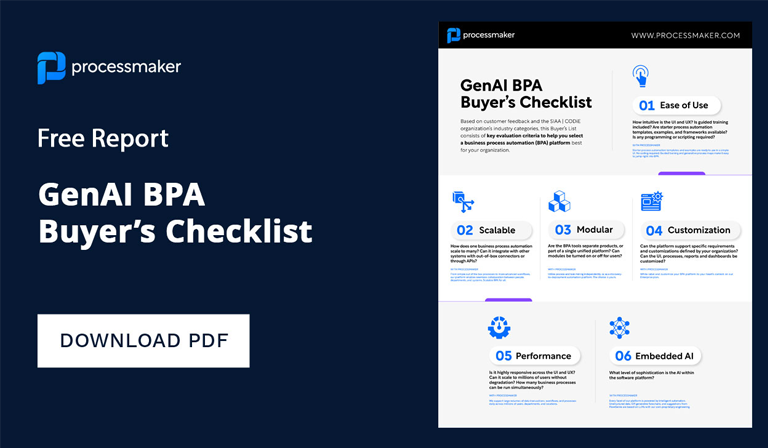If your organization slid slightly behind the curve in your digital transformation, there’s good news: automation is more accessible than ever. Thanks to innovative companies, automation is also increasingly easier to implement. As we enter into the second quarter of 2023, here are five automation technologies that your organization should consider investing in.
Artificial Intelligence (AI)
Large language models like ChatGPT devoured a sampling (albeit a massive serving) of the internet to learn about our thoughts, musings, and insights. Ask it a question like you’re speaking with a friend, and it will answer with a chipper, natural-sounding reply. The tech flaunts its gift for gab to rewrite the widely admonished Game of Thrones finale, pen passable dissertations, and take a crack at the Bar Exam.
But the buzz of artificial intelligence echoes far beyond the ChatGPT hive. Artificial intelligence can turn paintings of Julius Caesar into captivating videos and critique your use of filler words and pauses during Zoom meetings.
Organizations are using the diverse power of AI to:
- Generate on-the-spot pricing offers
- Recommend products
- Evaluate job applications
- Analyze sales trends
- Forecast demand
- Assess customer sentiments
- Detect fraud
- Unravel insights from traditionally hard-to-wrangle data sets
Artificial intelligence has reigned on Gartner’s must-have technology list for years. What’s changed now? AI tools are more available than ever, making it unshakably easy for organizations to hop in.
Artificial intelligence upgrades chatbots in a big way
Recent AI ingenuity has also heightened chatbots’ Uncanny Valley vibe. Now, robo-assistants can go far beyond basic tasks like fielding FAQs or resetting passwords. They’re convincing chatty-patties, almost friends, vying for your attention.
AI developments empower machines to converse more naturally. They can hold flexible, flowing conversations about topics without training on precise inputs. So customer service departments are enlisting the loquacious technology to man support desks. Chatbots can troubleshoot issues, prioritize calls, and even pass the baton to a human staffer if it senses an overly agitated caller. They’re becoming so powerful, that Gartner predicts that chatbots will emerge as the primary customer service operator by 2027.
Robotic Process Automation (RPA)
Robotic Process Automation can imitate tasks performed through a standardized recipe of clicks and keystrokes. Instead of drowning a human worker in an insurmountable mountain of paperwork, RPA can shoulder the load. It’s a whizz at ripping data from documents that follow formulaic templates like receipts, bank statements, invoices, and spreadsheets. Businesses are using this technology to:
- Automate “swivel-chair” tasks like copying and pasting info between applications
- Populate forms, spreadsheets, and reports
- Transfer files between systems
- Maintain databases
- Scrape screens
The potential cost savings of RPA are boundless. In fact, McKinsey estimates that the technology yields a potential ROI of 30–200% in the first year alone. If you’re contending with too many mundane, repetitive tasks, RPA is the right choice for you.
Intelligent Document Processing (IDP)
Intelligent document processing turns your document management strategy from a filing cabinet into a virtual assistant. IDP is like RPA with a graduate degree, going beyond content extraction to glean new context from your documents.
A U.S.-based phone number, for example, has 10 digits and parentheses often embrace the first three.
A photograph, on the other hand, does not follow a rigid formula. It could contain a wild animal or a birthday cake. It could contain any of the 10 million colors clear to the human eye.
IDP helps you get a handle on traditionally unmanageable documents, known as unstructured data. In addition to images, unstructured data can include PowerPoint presentations, Instagram Reels, surveillance footage, handwritten notes, emails, and more.
IDP learns about the nature of a document and extracts and organizes information with smarts:
- Identify and extract information from structured and unstructured data
- Convert words, numbers, and characters from a PDF into editable text
- Clean data by sharpening blotchy text or intelligently replacing missing characters
- Organize documents into logical categories
The big data problem isn’t going away anytime soon. In fact, experts estimate that the amount of unstructured data weighing down your organization will double every 90 days. IDP is just one of the technologies helping smart businesses manage the flood.
Internet of Things (IoT)
Look around your home and you’ll see the Internet of Things at work. Traditionally analog products and devices now carry a bevy of internet-connected sensors.
These sensors surveil your windows, unlock your front door by sensing your phone’s presence, and ping you when the egg carton is running low. The same type of sensors monitor heavy-equipment performance, scrutinize delivery-driver speeds, and draw the shades in an office building when the sun glares too brightly.
At its core, IoT gives organizations real-time access to their operations. Using the right ensemble of sensors, you can transform into a “fly on the wall” anywhere in the world. Monitor building activity, track assets positioned at a far-off worksite, or check into equipment performance at a remote oil & gas field.
Orchestrating all this information is an iron-clad business process management platform. The “sensed information” influences a workflow: closing the office’s window blinds is the result of an energy efficiency workflow, for example. Telematics information like driver speed, routing, or location feed your processes with real-time data so you can make the most efficient, cost-effective decision at any given moment.
Tech-forward manufacturers aren’t slowing down with IoT sensors, allowing organizations to tap into third-party data, too. This unparalleled, real-time view into product performance, ambient environments, and customer and employee behaviors are expected to fuel a $12.6 trillion valuation of the IoT market by 2030.
Business process automation (BPA)
Business process automation is perhaps the most important technology on the list: so much so, that it’s frequently included amongst McKinsey’s must-haves for automation success. BPA weaves these technologies into sophisticated, self-driving workflows. It’s the easiest way to craft automated sequences of tasks that involve each of the technologies above.
If these five remarkable advancements have piqued your curiosity, you’re probably thinking: how do you maintain control over this diverse tech stack?
When shopping options, be sure to target platforms that focus on process orchestration. Process orchestration brings all of your processes under one umbrella.
Here’s where you gain end-to-end command over your operations. With this strategy in mind, no automated technology runs under the radar. A centralized HQ serves as the conductor, monitoring RPA bots, executing IDP tasks, coordinating your chatbots, and more. Without process orchestration in mind, your tech stack becomes a wilderness of unmanageable and untrackable automation.
Whether your organization will best benefit from AI-powered analytics, an IDP-infused digital assistant, or IoT-gathered intel, automation isn’t a strategy for far-off in the future. New technology initiatives no longer take years and years to execute. They’re more doable, cost-effective, and easier than ever to launch. In fact, you can get started this quarter.





